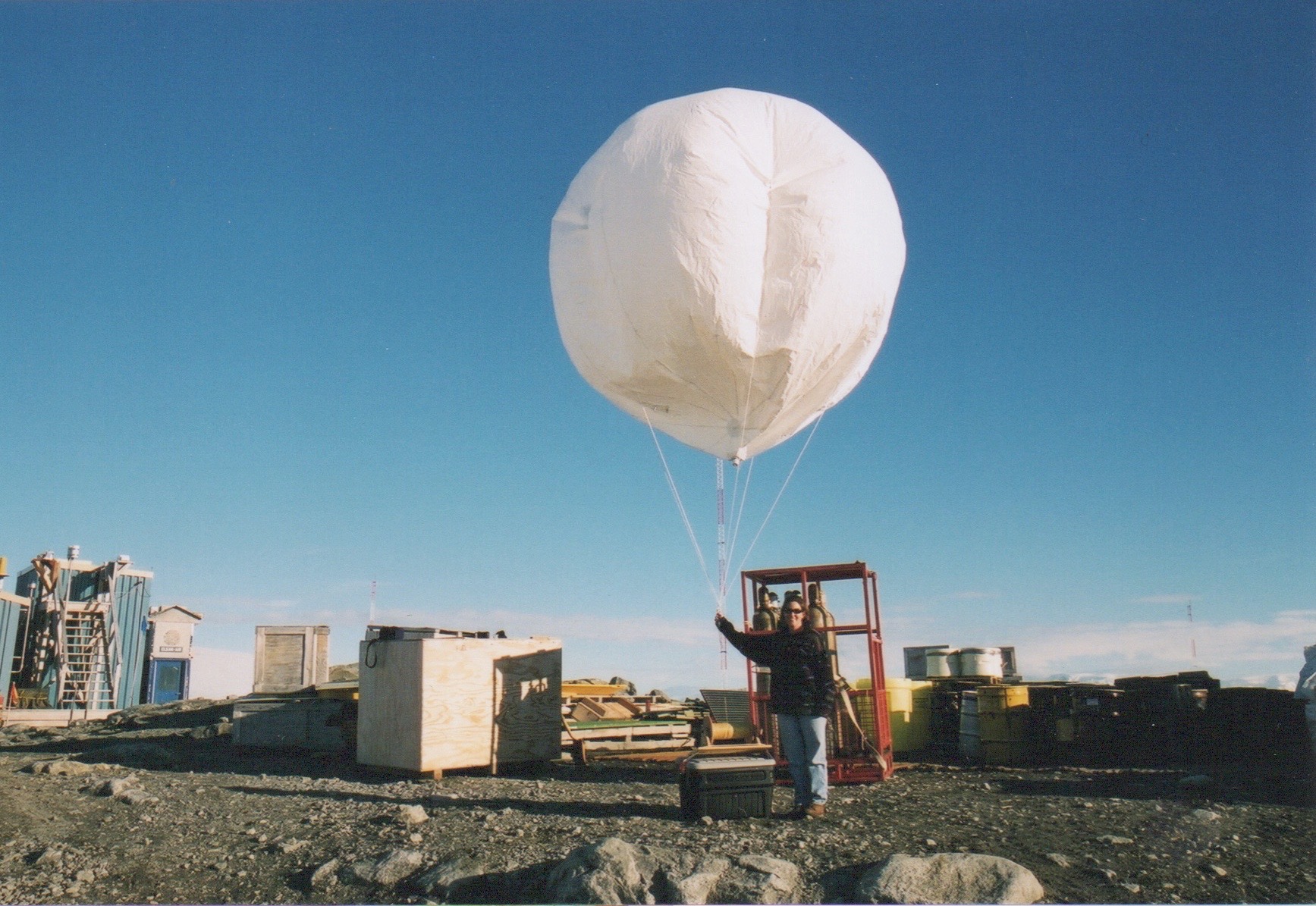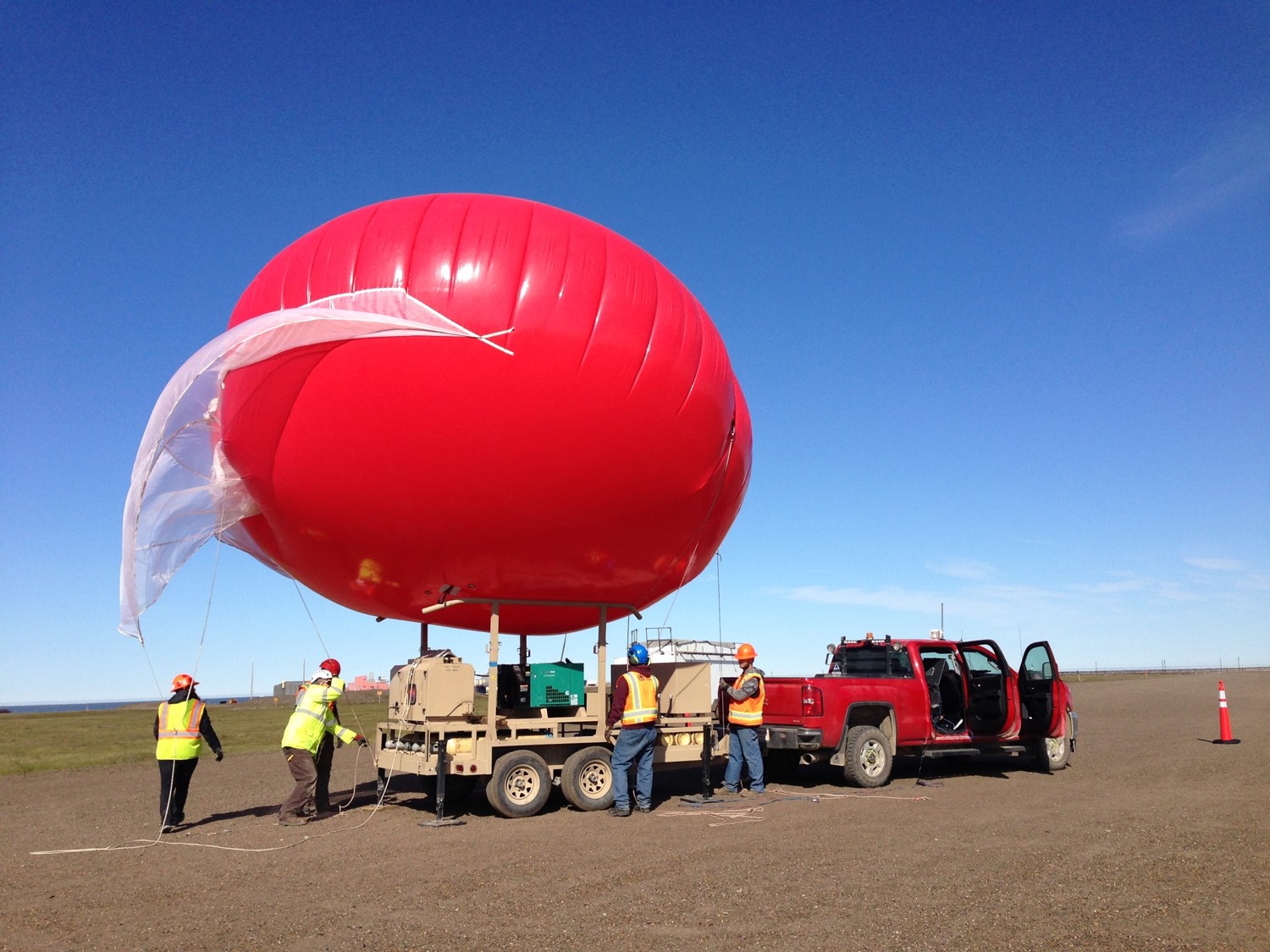The great uncertainties in models that simulate radiative transfer require a complex quest

One afternoon not long ago, atmospheric observationalist Allison McComiskey slipped on her hiking boots and headed to Table Mountain, a short drive from her office in Boulder, Colorado.
McComiskey, a physical scientist with the Earth System Research Laboratory at the National Oceanic and Atmospheric Administration (NOAA), does not get outside for work as much as she once did. During one phase of her graduate work, for instance, the Louisiana native spent a summer in Antarctica.
Table Mountain, the site of a NOAA test facility, is a place of arid scrubland, big sky, and towers and platforms stacked with instruments. McComiskey is a longtime expert on the science of aerosols and the history of how they have been measured. After 15 years in the field and at the computer, she is now group chief of the global radiation section within NOAA’s Global Monitoring Division.
Much of her research has been for the U.S. Department of Energy (DOE), through that agency’s Atmospheric Radiation Measurement (ARM) Climate Research Facility and its Atmospheric System Research (ASR) program. Her work largely concerns those constituents of the atmosphere—aerosols and clouds—that form a boundary between the Earth’s surface and the radiative energy of the sun.
“We have to understand how light energy and heat energy transfer through the atmosphere,” she says.
Like many atmospheric scientists, McComiskey works to improve the models that predict future climate scenarios. Doing that requires a better understanding of how aerosols and clouds change, how those changes impact the Earth’s energy budget, and how to measure those changes with more precision.
The Stuff of Clouds

Aerosols are the solid particles or droplets of liquid around which clouds form. How aerosols and clouds start, grow, shrink, break up, and (sometimes) create rain, snow, or drizzle is the concern of cloud microphysics. Since aerosols are foundational, practitioners such as McComiskey look for better ways to measure their mass, density, and optical properties.
Aerosols are the subject of study at many scales, from the molecule to the particle to the scale of sky-filling cloud columns. Add to the complexities of scale the fact that aerosols exist in an array of sizes, shapes, ages, compositions, and mixing states.
Cloud condensation nuclei—CCN—start out on the order of tenths of a micron in size, and may expand to raindrops thousands of microns in size. As they grow, aerosols display factors such as surface curvature and cross-sectional area, which must be measured and then folded into the inferences that inform computer models.
All this makes what McComiskey does very complex. Meanwhile, that complexity is vital to unravel. Aerosols are the source of great uncertainties in models that simulate radiative transfer.
Committees, Projects, and Papers
Untangling the complexities of aerosols requires the conference table as well as Table Mountain, other instrumented field sites, and even satellites.
To confront those complexities, McComiskey has served on many aerosol-related committees, including ASR’s past Aerosol Life Cycle working group. The group’s goal was to clarify how aerosols are distributed, and how their chemical, optical, and microphysical processes work.
She is also the first author, or co-author, of dozens of papers going back to 2002—though her new management role (now three years old), she says, has cut into her writing and research time.

Still, McComiskey—a science whirlwind hard to catch on the phone—has three projects going just within the ASR realm.
She is lead principal investigator (PI) on a project focused on better understanding aerosol radiative forcing by integrating measurements from ground-based observation platforms and remote-sensing satellite instruments. McComiskey and her NOAA team are developing ways to aggregate and synthesize that diverse information to reduce uncertainties in aerosol properties.
McComiskey is the PI representing aerosols and cloud-aerosol interactions on ASR’s Oliktok Point (Alaska) Science team. During the summer of 2016, she was at the site testing miniaturized instruments sent aloft on tethered balloons. (Arctic and polar clouds, along with aerosols, run like leitmotifs through McComiskey’s life as a researcher.)
She is co-PI on an ASR project led by longtime collaborator Graham Feingold looking at aerosol effects on the radiative properties of cloud fields. They did field work at the Southern Great Plains (SGP) in Oklahoma, ARM’s oldest atmospheric observatory. It spun gold: a Feingold-McComiskey paper in July.
A Sense of Science History, and More
Among her many papers, six McComiskey items pop up on a scan of ASR research highlights. But in combing the archives, don’t overlook her historical-scientific look at aerosols (Chapters 21 and 22) in the 2016 American Meteorological Society monograph marking 20 years of ARM data. Like aerosols, and like polar clouds, a sense of science history weaves through her work.
McComiskey studied anthropology as an undergraduate at Southern Methodist University, worked as an archaeologist in the Southwest, and has a doctorate in geography (from the University of California, Santa Barbara).
With durable life interests in deep history, mapping, and the environment, more than aerosols interest her. McComiskey is involved, for instance, in a NOAA-funded project for renewable energy, which teams up NOAA employees long involved in ARM and ASR science.
The project is about improving weather model forecasts for solar energy applications. It is also exploring ways to use SGP data to improve process understanding and to create better models.
Looking back on her career so far, and with aerosols as a kind of science lens, McComiskey says a lot has changed.
Aerosols can be studied at greater levels of process complexity and physical and chemical detail. There is more research than ever on how sources of aerosols interact. Ice clouds are getting more attention too.
What is more, computation and instruments have improved to the degree that single particles can be studied, she says, “down to the level of the molecule.”
# # #
This work was supported by the U.S. Department of Energy’s Office of Science, Office of Biological and Environmental Research as part of the Atmospheric System Research Program.

